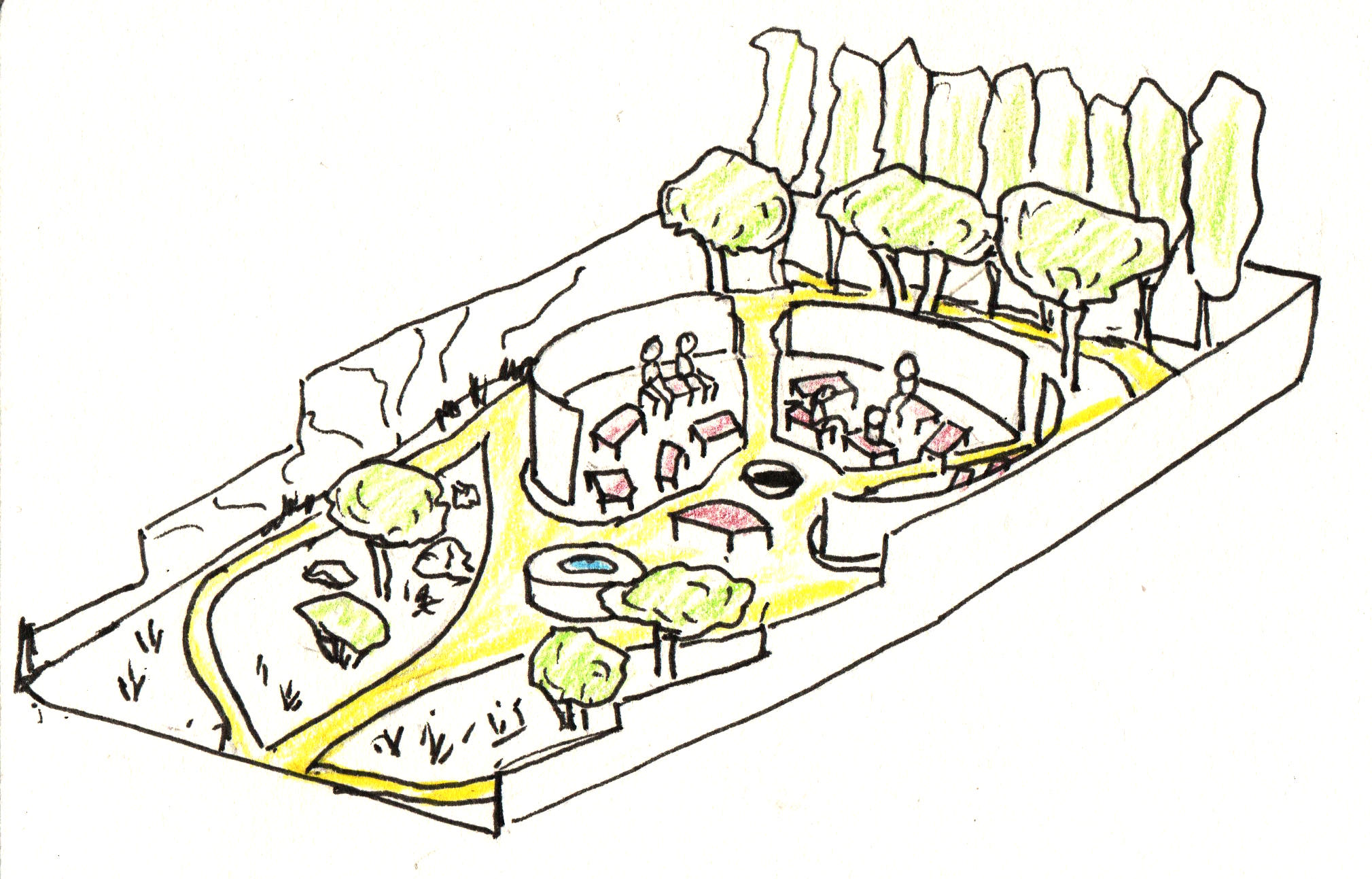We‘re in the midst of applying for the Local Places for Nature Capital Fund for the prototype Hope Garden. The deadline is 12th March! The proposed site for the prototype Hope Garden is adjacent to the Pen Y Foidr allotments, which is a Ffynnone Resilience project. Tess at the project has asked me to write a guest blog post, so here goes.
The Hope Garden is a Community Assembly at the heart of a wildlife forest garden. The original idea was to create an RHS garden, to invite debate around the climate emergency in an ecologically beneficial setting.
Then we realised that a real-life Hope Garden benefitting a real-life community would be the best way to kickstart and progress the project, with tangible, local benefits.
We are a group of like-minded individuals (climate activists, gardeners, designers, writers, ecologists) who have organically coalesced around the idea, and we’re making a grant application to the Local Places for Nature Capital Fund to create a Hope Garden at Pen Y Foidr allotments in Cilgerran.
A central part of the process is to run Community Assemblies as part of the co-design and creation of the gardens, so that the garden isn’t a delivered, final product but rather a responsive design to the needs of a specific community.
Community Assemblies are an effective and empowering way to build real participatory democracy into local decision making, through structured processes. A Community Assembly brings communities of interest, or geographically based people, together in inclusive decision making. This process provides a safe and equitable space for decision making with radical inclusivity, active listening and trust in the process at its foundations. Trained facilitators and note-takers support participants in coming to consensus on shared goals.

Martin Crawford’s world famous forest garden in Devon. This is what we’re talking about.
Forest gardening works with nature to grow edible crops, by emulating a woodland edge, with layered trees, shrubs and herbaceous perennials, such that the area provides its own nutrients, with nitrogen and potassium rich plants, and natural, ecological pest control through developing a diverse, balanced and resilient ecosystem.
With careful design, the shared space will be a safe space, nestled in a garden teeming with life, sheltered with a removable canvas.

BlueGreenCymru, a local CIC supporting the project, holding a workshop under canvas in the woods

Sketch inspired by BlueGreenCymru example
The first stage of a Community Assembly is the Setup. This is where the process is explained, with hand signals used, followed by the framing of the main question of the assembly is framed. This can be supplemented with an explanation/presentation by a practitioner from that specific field in focus. There is also an assembly facilitator and note-taker.

The visual design of the floor accommodates the Deliberation phase of the Community Assembly
The second stage is the Deliberation, where the assembly is split up into breakout groups of about 6. The community space of the Hope Garden is visually divided into three sections and there are light wooden benches to accomodate the groups. Each group has its own facilitator and note-taker, who then guide and note the ensuing conversation about the main question.
The final stage is the Integration, where the outcomes from the groups are collated and synthesised, and the key points of the assembly are drawn out. Also, it is made clear where this information will be used.
I will be sharing the contents of the application before it’s submitted, so that Pen Y Foidr members can see the scope and ambition of the project.
If you have any suggestions, thoughts or insights, please do share them with me. I can be contacted by email on hello@hopegarden.uk
Thank you,
Jake Rayson Garden designer
